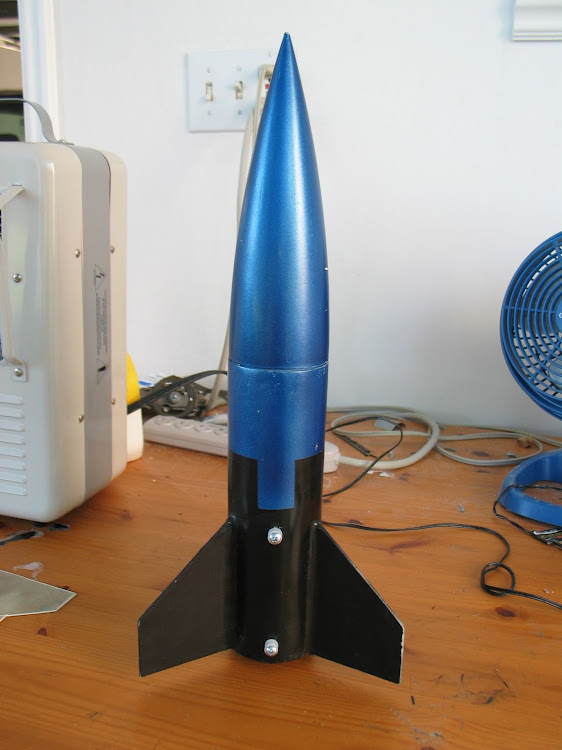Aksrockets
Now with 8% more aluminum
- Joined
- Apr 1, 2011
- Messages
- 3,505
- Reaction score
- 14
As if I needed another project....
I've got a 2.6in Nosecone and a 10in length of tubing from a rocket I scrapped long ago. They've just been sitting in my parts drawer, begging to be turned into some small, stubby, ridiculously overpowered little thing. I finally decided to put them to use!

Here's whats going on...
I'm going to be making a downscale of the Madcow "Squat". It'll be 2.6in in diameter, under 18in tall and have a 38mm motor mount. :headbang:
It's designed to fly on anything from an E motor, all the way up to a 38/360 I motor.
Tube will be glassed with 2 wraps of 6oz fiberglass. The NC is a Madcow 2.6in "patriot style" nosecone. The fins and Centering rings will be 1/8in plywood. I may glass the fins. It just depends on how much willpower and time I have on my hands.
Here is the Openrocket file if you want to play around with it:
View attachment Little SQUAT.rkt
...and here is a screenshot of the openrocket design with a 38/360 loaded.

I hope to start working on this thing in the next few days.
Alex
I've got a 2.6in Nosecone and a 10in length of tubing from a rocket I scrapped long ago. They've just been sitting in my parts drawer, begging to be turned into some small, stubby, ridiculously overpowered little thing. I finally decided to put them to use!
Here's whats going on...
I'm going to be making a downscale of the Madcow "Squat". It'll be 2.6in in diameter, under 18in tall and have a 38mm motor mount. :headbang:
It's designed to fly on anything from an E motor, all the way up to a 38/360 I motor.
Tube will be glassed with 2 wraps of 6oz fiberglass. The NC is a Madcow 2.6in "patriot style" nosecone. The fins and Centering rings will be 1/8in plywood. I may glass the fins. It just depends on how much willpower and time I have on my hands.
Here is the Openrocket file if you want to play around with it:
View attachment Little SQUAT.rkt
...and here is a screenshot of the openrocket design with a 38/360 loaded.
I hope to start working on this thing in the next few days.
Alex





